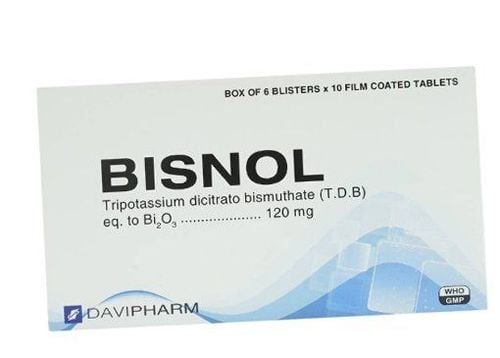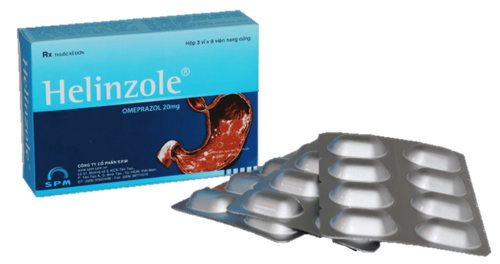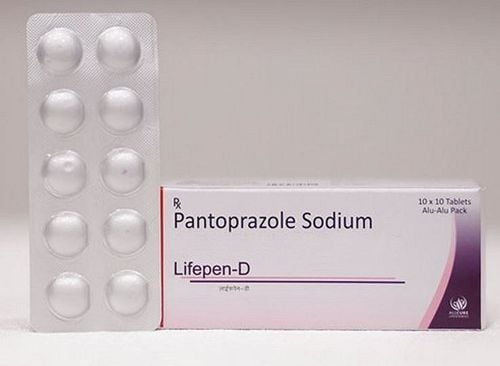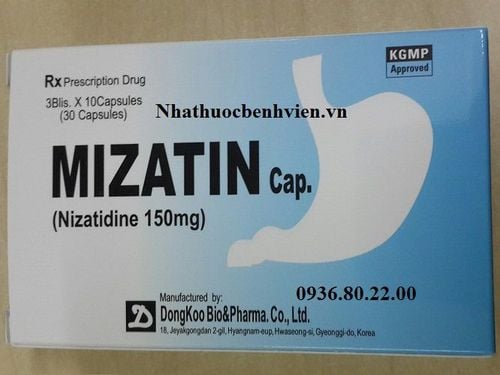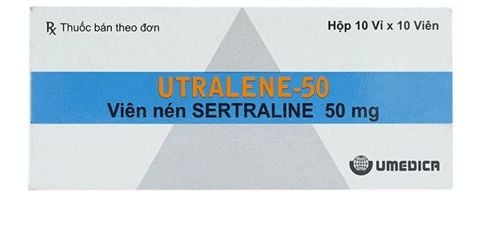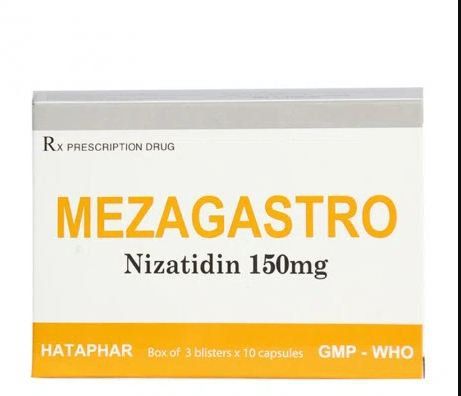This is an automatically translated article.
Rabenobe is commonly prescribed to treat duodenal ulcers, gastroesophageal reflux disease, stomach ulcers or other digestive problems. Before and during the use of Rabenobe, patients should carefully consult their doctor and use the drug according to the recommended schedule.1. What is Rabenobe?
Rabenobe belongs to the group of gastrointestinal drugs, used to repel unpleasant symptoms of diseases such as stomach ulcers, floating mouth ulcers, duodenal ulcers,... Rabenobe medicine originated from India and is currently being used in medicine. circulation in Vietnam.
Rabenobe is prepared in the form of enteric coated tablets and packed in a box of 2 blisters x 7 tablets. Each Rabenobe tablet contains the main active ingredient, Rabeprazole sodium, 20mg and some other excipients just enough.
2. What is the use of Rabenobe?
2.1. The effect of the active ingredient Rabeprazole sodium Rabeprazole sodium is known for its ability to effectively inhibit gastric acid secretion and fight ulcers very well. Some studies have shown that using the active ingredient Rabeprazole sodium improves ulcers and some gastric mucosal lesions related to pyloric ligation, cold stress, water stress, ethanol-HCl use. or Cysteamine.
2.2. Indications - Contraindications to the use of Rabenobe Currently, Rabenobe is prescribed by doctors to treat the following digestive problems:
Duodenal ulcer. Stomach ulcers. Zollinger-Ellison syndrome. Gastroesophageal reflux disease. Floating mouth ulcers. However, Rabenobe is contraindicated in the following cases:
Patients with hypersensitivity or allergic reactions to Rabeprazole or any of the excipients in the drug. Patients with known allergy or hypersensitivity to Benzimidazole derivatives. There are no adequate studies on the effects of Rabenobe in children, so its use is not recommended for this population.
3. Dosage and how to use Rabenobe effectively
3.1. Dosage of Rabenobe as indicated Usually, Rabenobe will be prescribed by a doctor with specific recommended dosages as follows:
Treatment of gastroesophageal reflux disease: Take a dose of 20mg / time / day continuously 4 to 8 weeks, an additional 8 weeks may be considered if necessary. Treatment of duodenal ulcer: Use dose 20mg / time x 4 weeks. Treatment of Zollinger-Ellison syndrome: Use an initial dose of 60 mg/time, then adjust the dose based on the patient's response. Treatment of erosive or ulcerative gastroesophageal reflux disease: 20mg/time/day for 4-8 weeks. If the disease does not heal after 8 weeks of treatment, another course of Rabenobe therapy can be used for another 8 weeks. Maintenance after curing erosive or ulcerative gastroesophageal reflux: Use dose 20mg/time/day. Treatment of symptomatic gastroesophageal reflux disease: Use the recommended dose of 20mg/time/day for 4 weeks. If symptoms do not completely disappear after 4 weeks, the patient can receive another course of Rabenobe treatment. Reduce the risk of duodenal ulcer recurrence: Rabenobe is used in combination with antibiotics to destroy Helicobacter pylori. 3.2. How should Rabenobe be used? Because it is formulated in the form of enteric-coated tablets, Rabenobe should be taken orally. You should swallow the tablet whole when taking it, and avoid chewing, breaking or crushing it.
Rabenobe can be taken with or without meals. You can carefully consult your doctor about the best time to take the drug for your health condition.
4. Possible side effects when taking Rabenobe
During the treatment of digestive problems with Rabenobe, patients are at risk of experiencing some unwanted side effects below:
Heaviness in the stomach. Hematologic changes. Rashes on the skin. Hives . Constipation. Change in liver function. Headache . Stomach feeling. Attenuate. Fever. Chills. Dry mouth . Belching. Digestive disorders. Sensitive to light. Stiff neck. Chest pain below the breastbone. Tired. Allergic reaction. Rectal bleeding, black stools. Gallstones, mouth/gum ulcers, loss of appetite. Cholecystitis. Increase appetite. Esophagitis, glossitis, pancreatitis, colitis . To avoid these health risks, patients need to take Rabenobe in the correct dose and schedule as directed by their doctor. Avoid self-medicating or changing your dose without talking to your doctor. In case of occurrence of any of the symptoms mentioned above, you should stop treatment and notify your doctor immediately for a remedy.
5. What should be noted and cautious when using Rabenobe?
Care should be taken when using Rabenobe for the following patients:
People with severe liver failure. Pregnant women. Women who are breastfeeding. In addition, the possibility of malignancy of gastric ulcer must be excluded before prescribing Rabenobe to patients. Before treatment with Rabenobe, patients also need to carefully check the expiry date of the drug. In case the medicine has expired and shows signs such as color change, watery or mold growth, you need to stop using and dispose of the damaged medicine according to the instructions of your doctor.
Rabenobe medicine should be stored in a cool, dry place, not exposed to direct sunlight and high humidity. Keep the medicine out of the reach of small children to prevent the child from taking it without knowing it.
6. What drugs does Rabenobe interact with?
Care should be taken when combining rabeprazole with the following drugs:
Digoxin . Phenytoin drug. Antacids containing Magnesium Hydroxide or Aluminum Hydroxide Gel. To prevent Rabenobe interactions with other medications, patients should inform their doctor about any medications they are currently taking. Your doctor will help you assess the risk of an interaction, thereby recommending the most effective medication plan.
Please dial HOTLINE for more information or register for an appointment HERE. Download MyVinmec app to make appointments faster and to manage your bookings easily.




